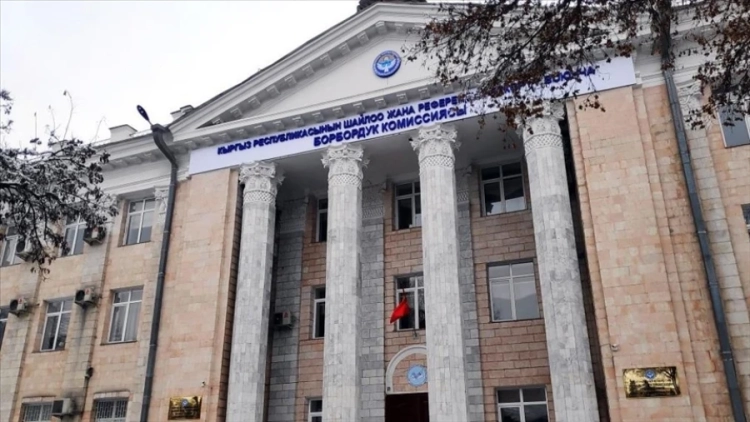Species of higher plants removed from the "Red Book" of Kyrgyzstan (1985)
Species of higher plants removed from the "Red Book" of Kyrgyzstan (1985)
1. Calamus aira — Acorus calamus L. — Sweet Flag, or Sweet Sedge, or Myrleflag.
A widely distributed species in the world. Perhaps it was introduced to Kyrgyzstan. Found only once in the floodplain of the Tüp River. Not encountered in subsequent searches.
A widely distributed species in the world. In Kyrgyzstan, it is apparently an alien species. It was noted only once in the floodplain of the Tüp River. Not found in subsequent searches.
2. Alai candle — Eremurus alaicus Chalkuziev — Alai Desert Candle
The species has been identified from a single recent finding. The existence of a population of this species in Kyrgyzstan, its growth conditions, and its reproduction are unknown.
A species recently described based on a single finding. The existence of populations, growth conditions, and threats to the species in Kyrgyzstan are unclear.
3. Illaria candle — Eremurus hilariae M. Pop. et Vved. — Hillaria’s Desert Candle
Not found in the territory of Kyrgyzstan.
Not encountered in the territory of Kyrgyzstan.
4. Long-leaved cephalanthera — Cephalanthera longifolia (L.) Fritsch. — Long-leaved Helleborine
A widely distributed species in Kyrgyzstan and beyond. Its population is stable and has no agricultural significance.
A widely distributed species in the world and in Kyrgyzstan with stable numbers, having no economic significance.
5. Fig — Ficus carica L. — Common Fig
A widely distributed species in the world. In Central Asia, it occurs naturally only in Turkmenistan and Tajikistan. In Kyrgyzstan, there is reliably only one tree known in the Kurpsay gorge, but it is likely a remnant of an ancient cultivated plant.
A widely distributed species in the world. In Central Asia, it naturally occurs only in Turkmenistan and Tajikistan. In Kyrgyzstan, there is reliably only one tree in the Kurshai gorge, which is likely a remnant of an old culture.
6. Bracteate poppy — Papaver bracteatum Lindl. — Bract-shaped Poppy
Not found in the territory of Kyrgyzstan in the wild.
Not encountered in the territory of Kyrgyzstan in the wild.
7. Linear-leaved rosewort — Rhodiola linearifolia Boriss. — Linear-leaved Rosewort
A widely distributed species in Kyrgyzstan and beyond, with a stable population.
A widely distributed species in Kyrgyzstan and outside with stable numbers.
8. White Janczevski’s currant — Ribes janczewskii Pojark. var. alba V. Tkatsch. — White Janczevski’s Currant
A white-fruited form of the species found in Kyrgyzstan. Occasionally appears among black-fruited populations. The processes of appearance and disappearance are not dependent on human activity. White-fruited and white-flowered forms are found among almost all species due to the influence of variability within the species. All of them cannot and do not need to be protected.
A white-fruited form of a common species in Kyrgyzstan. Sporadically appears in typical black-fruited populations. The appearance and disappearance of these forms are practically independent of human activity. White-fruited and white-flowered forms occur in almost all plant species and are manifestations of intraspecific variability. All of them cannot and do not need to be protected.
9. Turkestan mountain-ash — Sorbus turkestanica (Franch.) Hedl. — Turkestan Mountain-ash
Not found in the territory of Kyrgyzstan.
Not encountered in the territory of Kyrgyzstan.
10. Aflatun cherry, or Fergana plum — Prunus ferganica Lincz. et Kost. (Prunoaflatunia).
This form appears periodically from spontaneous hybridization of two species commonly found in the territory of Kyrgyzstan. The emergence and disappearance of hybrid forms are not dependent on human activity. There are also other, rarely encountered hybrid forms. All of them cannot and do not need to be protected.
The form is a spontaneous hybrid between two common species in Kyrgyzstan and sporadically appears in places where they coexist. The appearance and disappearance of hybrid forms are practically independent of human activity. There are other rarely encountered hybrid forms. All of them cannot and do not need to be protected.
11. Kirghizian sweet broom — Hedysarum kirghisorum B. Fedtsch. — Kirghizian Sweet Broom
A widely distributed species in Kyrgyzstan, slightly distinguishable from the common H. neglectum. Found in high mountainous areas, in places with minimal human impact. Not grazed by livestock, has no agricultural significance, so there is no real threat of extinction.
A widely distributed species in Kyrgyzstan, slightly differing from the common H. neglectum. Grows in the upper mountain belt where anthropogenic influence is minimal, the plant is not grazed by livestock and has no economic significance, therefore there is no real threat to the species.
12. Uzun-Akhmat Calligonum — Calligonum uzunachmatense V. Tkatsch. — Uzun-Akhmat Calligonum
The name is a synonym for a more widely distributed species. In Kyrgyzstan, C. uzunachmatense was found in sandy areas along the Naryn River. Currently, these areas are submerged under the reservoir.
The name is a synonym for a more widely distributed species. In Kyrgyzstan, C. uzunachmatense was found only on sandy areas in the floodplain of the Naryn River. Currently, these habitats are flooded by reservoir waters.
13. Dwarf pomegranate — Punica granatum L. — Dwarf Pomegranate
A widely distributed species in the world. In Central Asia, it occurs naturally in Turkmenistan and Tajikistan. A widely distributed species in the world.
Naturally, it occurs in Central Asia in Turkmenistan and Tajikistan. In Kyrgyzstan, there was reliably known to be a single tree in a natural habitat in the Ryazan-Sai gorge, but it was likely a remnant of an old culture.
14. Nikitina’s Otostegia — Otostegia nikitinae V. Scharaschova. — Nikitina’s Otostegia
The species is slightly distinguishable from the widely distributed O. olgae and may be its form (synonym).
The species is slightly different from the widely distributed O. olgae and is apparently its form (synonym).
15. Scalehead-leaved Desert-rod — Eremostachys cephalariifolia M. Pop. — Scalehead-leaved Desert-rod
The name is a synonym for the widely distributed and ecologically flexible species E. speciosa Rupr. It is not threatened in Kyrgyzstan.
The name is a synonym for the widely distributed and ecologically adaptable species E. speciosa Rupr., which is not threatened in Kyrgyzstan.
16. Tall helecampane — Inula helenium L. — Tall Helecampane
A widely distributed species in the world and in Kyrgyzstan, with stable numbers, sometimes considered a weed. A widely distributed species in the world and in Kyrgyzstan with stable numbers, sometimes a weed.













































